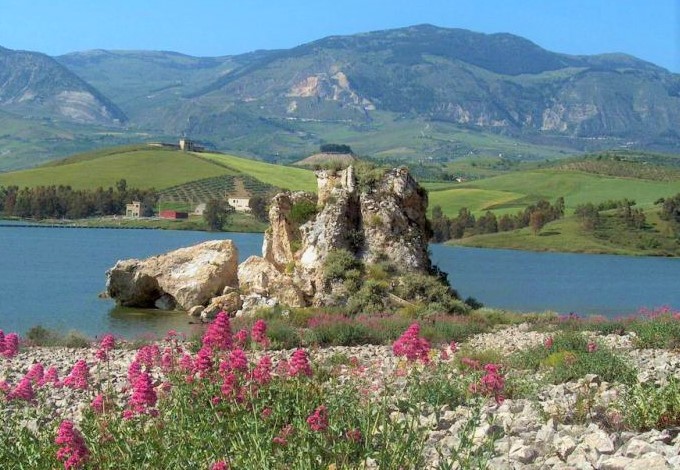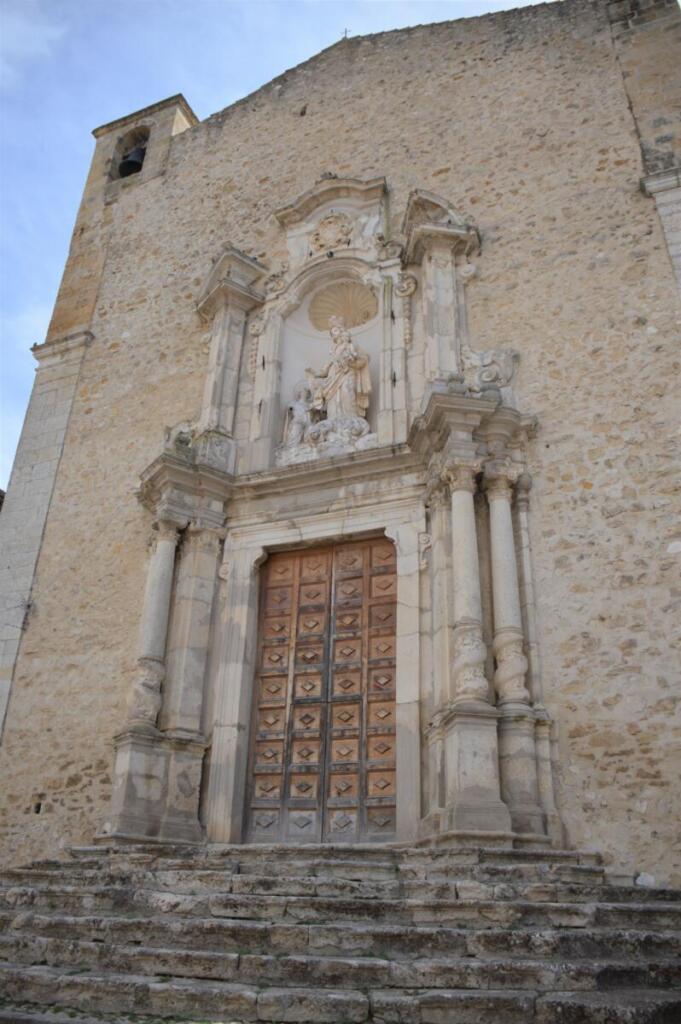In the late morning the young researcher from the University of Palermo arrived in Alessandria della Rocca in order to deepen his studies on two eighteenth-century wooden statues found in the Mother Church.
[caption id="attachment_120975" align="center-block" width="680"] Picture by iCastelli.it[/caption]
Picture by iCastelli.it[/caption]
Before leaving, we enjoyed an aperitif inside the town hall, or more properly, in the Parco delle Rimembranze (Remembrance Park), between the Monument to the Fallen of the Great War and the holm oak trees. One tree for every Alexandrine fallen in the war.
From the terrace we admired the panorama of the lake, called Castello dam, with the ruins of the 9th century stronghold which was the symbol of power before the foundation of the new village of Alessandria della Pietra.
The young researcher began to ask me about the origins of the municipality and what else we could see.
I promptly began: "Alessandria della Pietra was founded by Carlo Barresi in 1570 and just this year the 450th anniversary occurs from the ‘licentia populandi’ which he obtained ".
I realized, however, that those stereotyped bits of news were inadequate for the interlocutor I had before me.
I stopped for a moment and decided to proceed differently: I had the strange impression, that became a certainty, that on that day it would be more me than he to learn and enrich my historical and artistic curiosity.
We headed towards the Mother Church, built in 1610 on the ruins of the church dedicated to San Nicola, the first protector of the town.
Once inside his gaze immediately rested on the eighteenth-century sculptural group depicting the Madonna of Carmel with the Child in her arms and kneeling San Simone Stock.
He began to point out that the author with all certainty was the Palermitan Girolamo Bagnasco.
And here I began to be intrigued by so much wisdom.
We moved on to the eighteenth-century altar and agreed that it had to be by a local sculptor, as well as the large canvases placed on the sides and at the bottom of the side aisles. While the one above the baptismal font had been painted by Provenzani.
He then stopped to admire the statuette of the Madonna della Rocca, elected patroness of Alexandria after its prodigious discovery in the seventeenth century. A small statue, just 60 cm high, in marble depicting the Virgin Mary with her son wrapped in a frieze and draped cloak.
We continued our journey reaching the church of the Convent where the statue of St. Joseph is currently kept: the one for which he had come.
He stopped in front of that work of art, recently restored: it was probably the work of a Sicilian sculptor of the late seventeenth or early nineteenth century.
The statue was very beautiful: the delicate face of the saint and the Child, the sweet gaze of both, the sinuosity of the cloak that enveloped him, the colours.
Everything makes this wooden sculpture a work of art of certain quality.
He lingered for a long time to admire it, after which I invited him to raise his eyes to the choir where a seventeenth-century canvas was placed.
He told me it must surely be something really important.
Oh yes. It was Elisabetta Barresi who in that canvas "resembled the same", as drawn in 1672 by one of her descendants, the Prince of Resuttano.
The barunissa, the protagonist of my three mystery novels, was a fervidly religious woman, a great benefactor, politically and intellectually astute, a business woman.
"It is to her that the history of Alessandria della Pietra is inextricably linked which, under her investiture, experienced its greatest splendour."
We then passed through the Carmine church, the finest and most classic example of Baroque art in Alessandria della Rocca. Finally we arrived at the Collegio di Maria on whose only altar is the wooden statue of the Immaculate Conception.
The young professor observed her carefully and said that it came from the Neapolitan school with the features and style of the faces.
He explained to me how the importation of wooden statues from Campania had continued throughout the eighteenth century and that even here there must have been strong contacts and exchanges with Naples, which did not fail even when the island passed from Spanish domination to that of the Savoy.
It was a truly singular work and one of unique beauty.
A statue of the Immaculate Madonna wrapped in a blue cloak and placed on a cloud, with some angels watching her in ecstasy while she crushes the tempting snake with her foot.
Time had flown by and there was still so much to see: the Sicanian necropolises, the baronial palaces, the Turri and much more.
But the strangest sensation was the impression that the visitor had made on me.
For a day he had looked at those works of art, familiar to me, with different eyes, thanks to what the young researcher highlighted.
It was as if I hadn't seen them before.
It fact we were actually complementing each other and he confirmed it to me. It was a continuous alternation, almost a race to highlight the history of the town and for him to talk about local artists and Neapolitan shops.







Follow us